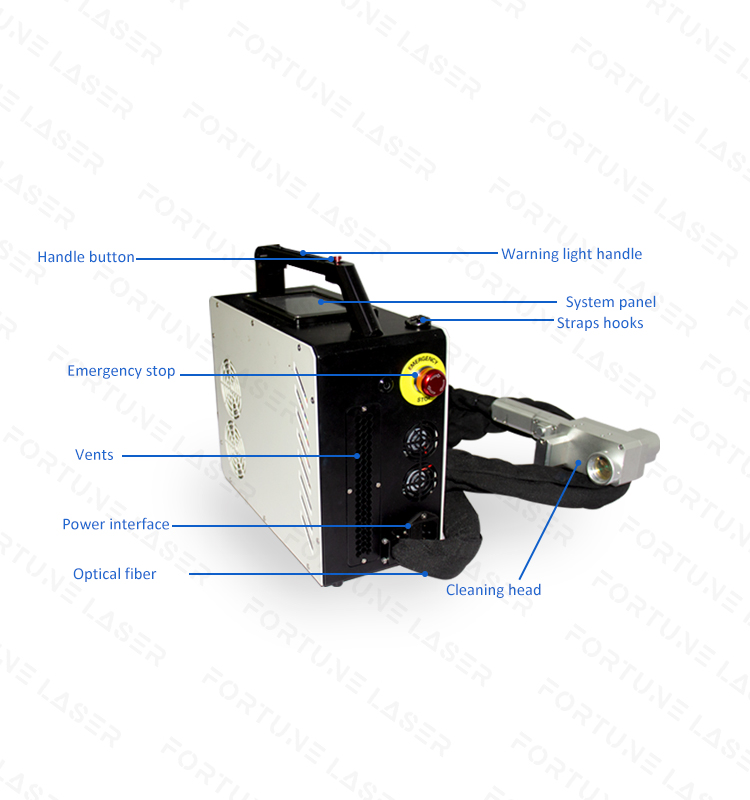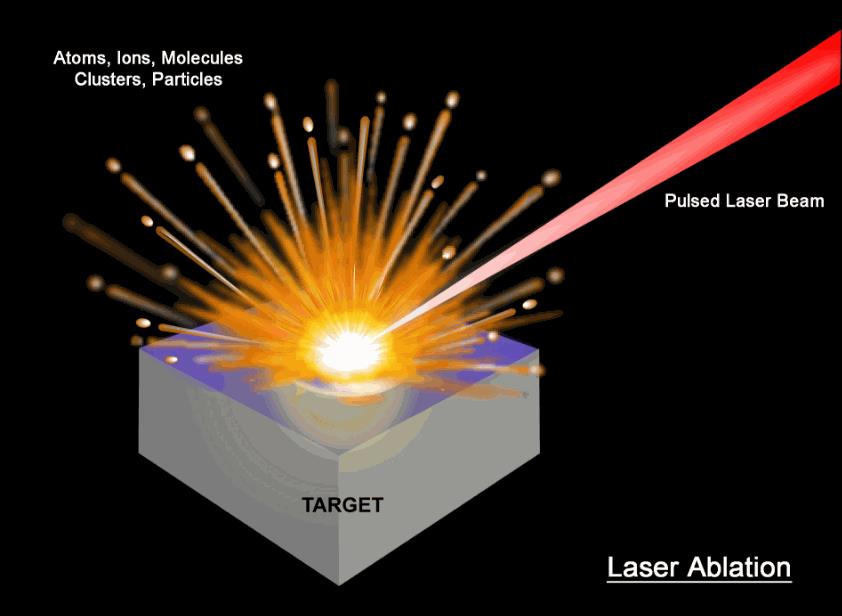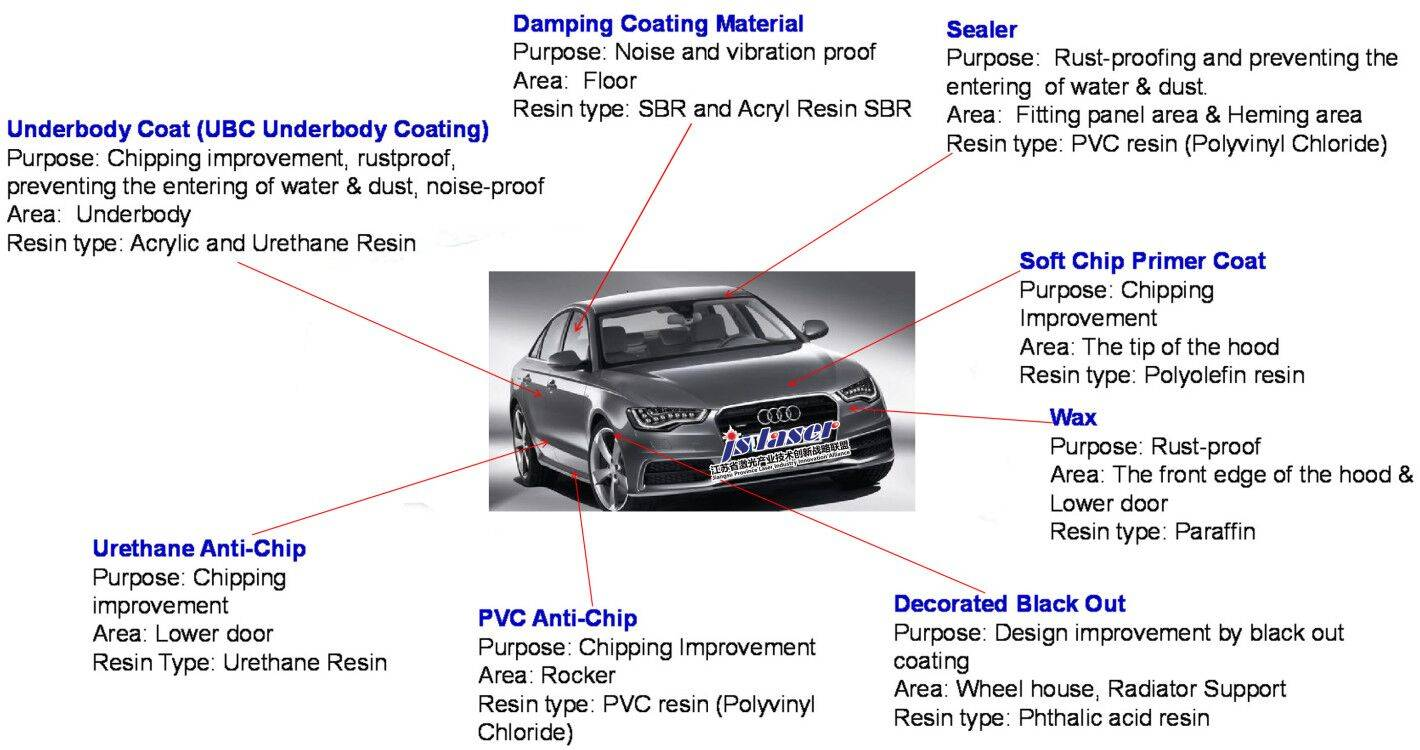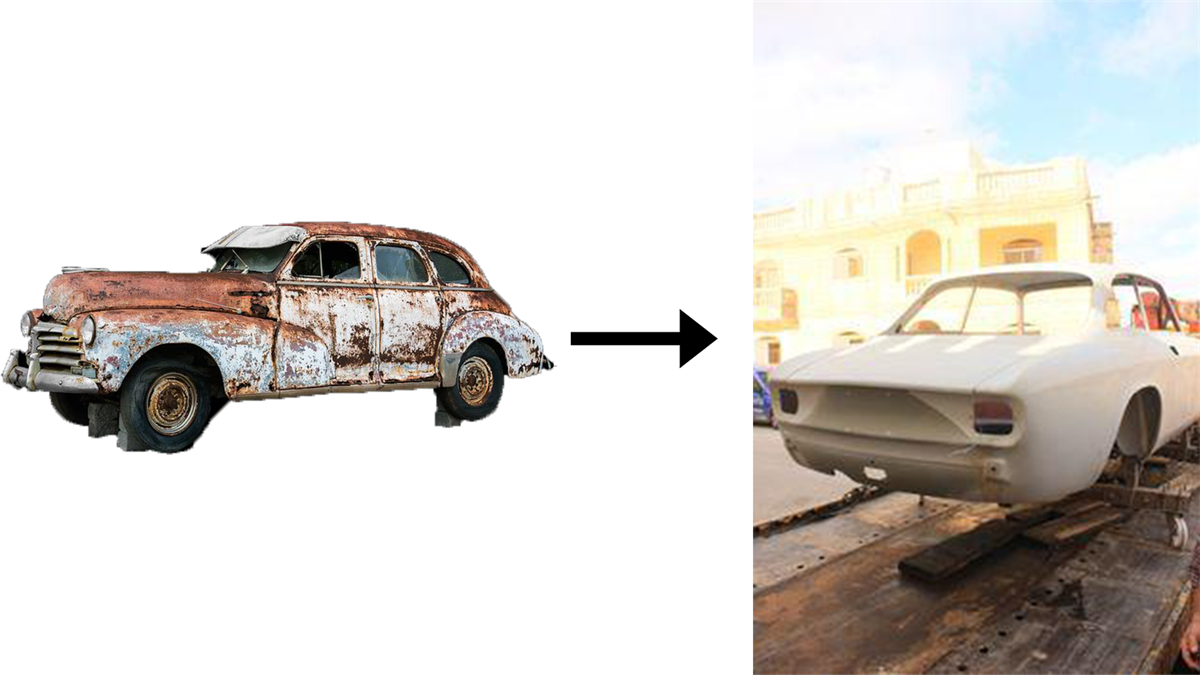In the automotive manufacturing process, drawing lubricants or cooling lubricants and anti-rust oils used can contaminate automotive components and severely degrade the quality of subsequent high-energy joining or bonding processes. In this process, welds and bonds in powertrain components must be strict quality standards are met. Therefore, the joint surfaces must be thoroughly cleaned.
Why more and more people use laser cleaning to replace traditional cleaning? What is the difference between laser cleaning and traditional cleaning in automotive applications?

In the automotive industry, the old paint on the surface needs to be removed so that the new paint can be applied before the body is overhauled.
There are many traditional car body paint cleaning methods, mainly includes mechanical and chemical methods. For the mechanical methods, includes high-pressure water jet paint removal, sandblasting and steel brush grinding. And chemical methods mainly refer to chemical reagents for paint removal. These methods have defects such as high cost, high energy consumption, easy pollution, and easy damage to the surface of the substrate, and have gradually failed to meet the modern high requirements for environmental protection of cleaning methods.
The fast, automated nature of laser cleaning allows for thorough cleaning of surface residues, resulting in strong, void- and micro-crack-free welds and bonds. In addition, laser cleaning is gentle and the process is significantly faster than other methods, advantages that have been recognized by the automotive industry.
In the industrial field, in order to protect metal or other substrate materials, the surface is generally painted to prevent rust, oxidation, and corrosion. When the paint layer is partially peeled off or the surface needs to be repainted for other reasons, the original paint layer needs to be completely cleaned.

In response to this situation, many new cleaning technologies have emerged, and laser cleaning, as one of the important means, has gradually shown its superiority. Correspondingly, we will introduce the cleaning application of laser cleaning machine in the automotive industry.
1. There is a relatively complete process for removing paint on the surface of automobiles and the process for removing primer for steel plates. The laser beam is transmitted by optical fiber and continuously scanned to remove the paint layer and primer on the surface of the steel plate, leaving a clean surface on the surface of the steel plate, which is suitable for repainting or further other processes.
The use of this laser cleaning technology to clean automobile brake pads is a perfect alternative to traditional surface cleaning. The traditional cleaning process of automobile brake pads, such as sandblasting, is relatively inconvenient to clean the back panel. The use of adaptive laser cleaning technology can achieve an automated way to clean the back plate of the brake pad to meet the subsequent coating process. Selective removal, no substrate damage, and fast cleaning rates are key enabling factors for laser cleaning paints.

2. When people’s old cars need to be refurbished to restore their original beauty or redecorated their old objects, with the increase of laser power, laser cleaning technology will play a big role. Today’s laser cleaning can clean and remove unwanted old surfaces on almost any car’s old parts. For example, even the chrome-plated surface layer can be perfectly removed. Typically, the top weathered coating on a vehicle needs to be completely removed before new paint is applied. Since the physical and chemical properties of the top layer of paint are different from the primer, the power and frequency of the laser can be set to remove only the top layer of paint

Novel welding techniques or joining processes adopted in the continuous innovation of automotive technology require perfect pre-treatment of the welded or joined surfaces, and at this time laser cleaning can provide a dry, precise and non-abrasive Cleaning treatment, while traditional wet chemical cleaning or mechanical grinding treatment methods are often difficult to meet, and most parts are now laser cleaned.
And laser cleaning has many advantages over traditional cleaning:
1. Automated assembly line: The laser cleaning machine can be integrated with CNC machine tools or robots to implement remote control and cleaning, which can realize the automation of equipment, form product assembly line operations, and operate intelligently.
2. Accurate positioning: use optical fiber transmission to guide the laser to make it flexible, and control the light spot to move at high speed through the built-in scanning galvanometer, which is convenient for non-contact hard-to-reach parts such as special-shaped parts, holes, and grooves that are difficult to reach by traditional cleaning methods. ground laser cleaning.
3.No damage: short-term impact will not heat the metal surface, and no damage to the substrate.
4.Good stability: The pulsed laser used in the laser cleaning machine has a long service life, usually up to 100,000 hours, with stable quality and good reliability.
5. Low maintenance cost: no consumables are consumed during the use of the laser cleaning machine, and the operating cost is low. In the later stage, only the lens needs to be cleaned or replaced regularly, and the maintenance cost is low, which is close to maintenance-free.
The above are the cleaning applications and advantages of laser cleaning machines in the automotive industry. The application of laser polishing, surface cleaning and coating removal is rapidly expanding. Depending on the application, the pulse frequency, energy and wavelength of the laser must be precisely selected to clean, polish and ablate the target material. At the same time, any form of damage to the base material must be prevented.
If you want to learn more about laser cleaning, or want to buy the best laser cleaning machine for you, please leave a message on our website and email us directly!
Post time: Sep-26-2022









